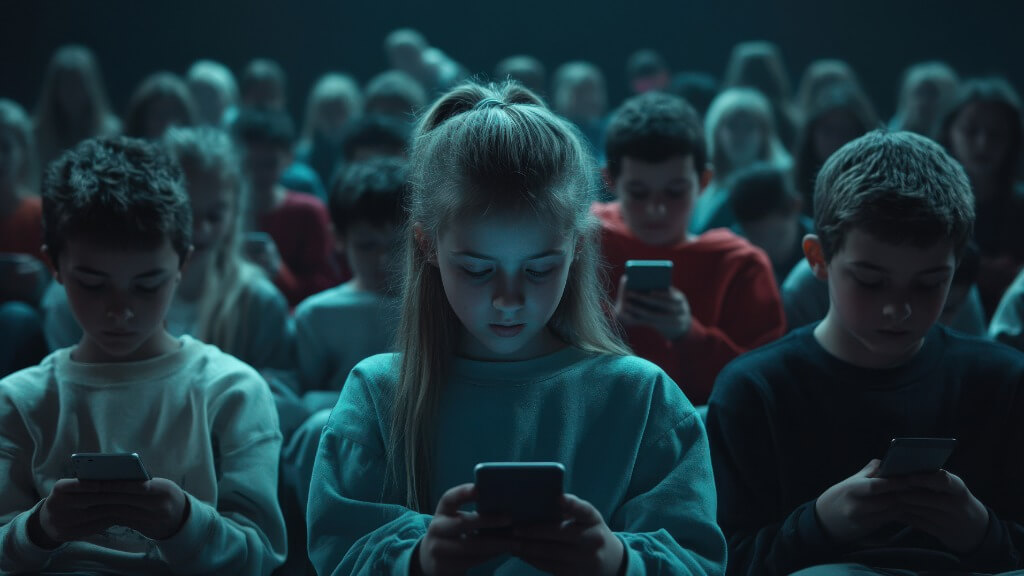Porn has been labelled “the new drug”, with so many people now addicted to internet porn. Sadly, a significant portion of the internet is devoted to pornography sites, and viewership among adults and minors is on the rise. Around 35% of all internet downloads are pornographic (full article here). That is a truly shocking statistic.
This proliferation of porn ultimately leads to increasing rates of porn addiction.
Yet there are still many misconceptions about porn, especially those trying to justify porn. He is a ‘fact-check’ of the most common rationalisations about porn, carried out by the organisation – Fight The New Drug:
- Porn actually decreases sexual violence. WRONG – research consistently shows that porn consumption is actually associated with increased sexual violence.1 2
- Porn isn’t addictive. WRONG – neuroscientific studies agree that pornography addiction is very real.3 4 5
- Porn actually improves your sex life/relationship. WRONG – research consistently shows that frequent porn consumption is associated with sexual dissatisfaction.6 7 8 9
- The problem isn’t porn, it’s shame/stigma. WRONG – research indicates that ‘shame’ is not a significant predictor of compulsive pornography.10 11
- Porn has been around forever, it’s not a ‘new drug. WRONG – today’s online porn is more accessible, more affordable, more available, more anonymous, and more extreme than anything available before the internet. It’s therefore much more addictive.12
- Mainstream porn is toxic, but there’s always ethical porn. WRONG – based on all the associated problems with porn, how can it also be ethical. Plus it’s virtually impossible to guarantee that the porn you’re watching is truly consensual, or even legal.13
- If my partner won’t stop watching porn, they must be unsatisfied with me. WRONG – most porn consumers are exposed to porn before they meet their partner, and those habits can be difficult to break.14
- Porn is sex-positive, and being against it is sex-negative. WRONG – there is much healthier ways to be ‘sex-positive’, perhaps that which is enjoyed between husband and wife?
To make matters worse, research consistently shows that porn consumption is associated with sexual dysfunction (for both men and women)15 and decreased sexual satisfaction.16
Read the full article here.
CITATIONS
1 Wright, P. J., Tokunaga, R. S., & Kraus, A. (2016). A meta-analysis of pornography consumption and actual acts of sexual aggression in general population studies. Journal of Communication, 66(1), 183-205.
2 Rostad, W. L., Gittins-Stone, D., Huntington, C., Rizzo, C. J., Pearlman, D., & Orchowski, L. (2019). The association between exposure to violent pornography and teen dating violence in grade 10 high school students. Archives of Sexual Behavior, 48(7), 2137-2147.
3 Love, T., Laier, C., Brand, M., Hatch, L., & Hajela, R. (2015). Neuroscience of Internet Pornography Addiction: A Review and Update. Behavioral sciences (Basel, Switzerland), 5(3), 388–433.
4 Stark, R., & Klucken, T. (2017). Neuroscientific approaches to (online) pornography addiction. In C. Montag, & M. Reuter (Eds.), Internet addiction: Neuroscientific approaches and therapeutical implications including smartphone addiction (pp. 109-124). Cham: Springer International Publishing. doi:10.1007/978-3-319-46276-9_7.
5 Willoughby, B. J., Young-Petersen, B., & Leonhardt, N. D. (2018). Exploring Trajectories of Pornography Use Through Adolescence and Emerging Adulthood. Journal of sex research, 55(3), 297–309.
6 Maddox, A. M., Rhoades, G. K., & Markman, H. J. (2011). Viewing sexually-explicit materials alone or together: associations with relationship quality. Archives of sexual behavior, 40(2), 441–448.
7 Perry S. L. (2017). Does Viewing Pornography Reduce Marital Quality Over Time? Evidence from Longitudinal Data. Archives of sexual behavior, 46(2), 549–559.
8 Wright, P. J., Miezan, E., & Sun, C. (2019). Pornography consumption and sexual satisfaction in a Korean sample. Journal of Media Psychology: Theories, Methods, and Applications, 31(3), 164–169.
9 Wright, P. J., Bridges, A. J., Sun, C., Ezzell, M. B., & Johnson, J. A. (2018). Personal pornography viewing and sexual satisfaction: A quadratic analysis. J.Sex Marital Ther., 44(3), 308-315.
10 Gilliland, R., South, M., Carpenter, B. N., & Hardy, S. A. (2011). The roles of shame and guilt in hypersexual behavior. 18(1), 12-29.
11 Reid, R. C., Stein, J. A., & Carpenter, B. N. (2011). Understanding the roles of shame and neuroticism in a patient sample of hypersexual men. The Journal of nervous and mental disease, 199(4), 263–267.
12 Voon, V., Mole, T. B., Banca, P., Porter, L., Morris, L., Mitchell, S., Lapa, T. R., Karr, J., Harrison, N. A., Potenza, M. N., & Irvine, M. (2014). Neural correlates of sexual cue reactivity in individuals with and without compulsive sexual behaviours. PloS one, 9(7), e102419.
13 Titheradge, N., & Croxford, R. (2021). The children selling explicit videos on OnlyFans. BBC News Retrieved from https://www.bbc.com/news/uk-57255983
14 Stewart, D. N., & Szymanski, D. M. (2012). Young adult women’s reports of their male romantic partner’s pornography use as a correlate of their self-esteem, relationship quality, and sexual satisfaction. Sex Roles, 67(5), 257-271.
15 Bőthe, B., Tóth-Király, I., Griffiths, M. D., Potenza, M. N., Orosz, G., & Demetrovics, Z. (2021). Are sexual functioning problems associated with frequent pornography use and/or problematic pornography use? Results from a large community survey including males and females. Addictive Behaviors, 112, 106603.
16 Sun, C., Bridges, A., Johnson, J. A., & Ezzell, M. B. (2016). Pornography and the male sexual script: An analysis of consumption and sexual relations. Archives of Sexual Behavior, 45(4), 983-994.




